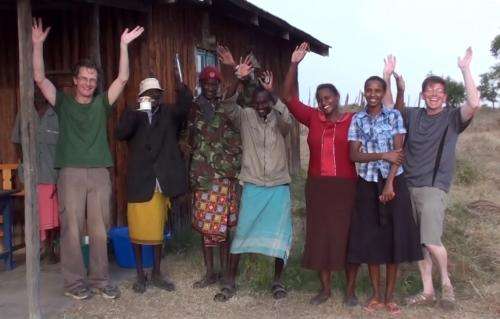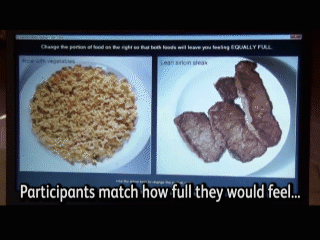How do we choose the food we eat?

Every day we make choices about the foods we eat. Try as we might, it's all too easy to make decisions that aren't the best for our short-term waistlines or long-term health. In the developed world, and in urban centres in many developing countries, we live in what's now referred to as an 'obesogenic environment': one replete with myriad culinary options from around the world that wouldn't have been dreamt of just 20 years ago, let alone a hundred.
"We're adapted as hunter gatherers who might encounter 100 different foods, but a supermarket might have thousands," says experimental psychologist Professor Jeff Brunstrom from the Nutrition and Behaviour Unit of the University of Bristol. "I don't think we've thought enough about how we respond to diets with this level of complexity."
Studying this issue is tricky because everyone has already been exposed to highly processed foodstuffs, so it's difficult to figure out what our dietary behaviour might look like had we not had this experience. Brunstrom and colleague anthropologist Dr Jon Holtzman from Western Michigan University have turned this problem into an opportunity, by performing some of their experiments on a natural control group: the semi-nomadic Samburu people of Kenya.
The Samburu have never been exposed to Western junk food, and eat a limited, unprocessed diet of meat, cereal crops, blood and milk. Comparing their responses with people in the west could reveal much about the consequences of living with such a complex varied diet.
These ambitious and ongoing experiments have never been performed in such a way with an indigenous people. It soon became clear that Brunstrom would require some help. So he asked two other psychologists to join him, Professor Peter Rogers from Bristol and Professor Kevin Myers from Bucknell University.
The results could provide insights into why it's so easy to over eat, or whether sugar and fat replacements are affecting our natural senses and leading to weight gain. This, in turn, could also feed into guidelines for policy makers in food and health circles, and inform the food industry on how to handle factors such as sugar content and portion size, and reduce food waste.
The fat of the land

One idea that Brunstrom wants to test is whether there might be an upper limit to the number of foods our bodies can learn about. For instance, we know that humans learn connections about foods, their taste and their post-ingestive effects. Humans learn that certain foods are very energy dense and then develop affection and a liking for them.
Brunstrom and colleagues designed a clutch of experiments and pilot studies to investigate these types of question. One is the classic 'preloading' experiment, when participants are asked to eat a bland 'preload' – a mass of starch-rich clear gel with added sugar to make it palatable – and their responses to a second meal are then recorded. In theory, a more filling first preload meal (when say calorie number is secretly manipulated upwards) should mean that less is consumed during the next meal. Researchers can also use this preload to manipulate various criteria, including sweetness, calorific value and protein content, to see how people compensate.
In this instance, the Samburu ate considerable quantities in their second meal, indicating that they did not compensate for the number of calories as people in the developed countries do. However, in a different but similar study, the Samburu were sensitive to calories in Coca-Cola relative to water, because they consumed a smaller test meal after drinking coke.
"So under certain circumstances we did see sensitivity [to calories]," Brunstrom explains. "Suggesting that sweetness wasn't by itself a separate driver of this compensation effect."
Another study looked at portion size, where participants are offered a large amount of food and asked to eat their fill. This experiment has been run in a number of countries, and people, it appears we the same the world over: people eat more when offered a larger portion, including the Samburu.
Brunstrom was encouraged by this experiment, because it means that the social and cultural complexities of human behaviour can be measured and studied abroad using established techniques in behavioural psychology. "What's interesting is that the Samburu were trying to eat as much as possible, but 'what's possible' was still dictated by the situation, not by some stable internal sense," he says.
Food for thought

Other experiments may have fared less well, such as a food comparison text where subjects try to match the calories or how full they would feel by manipulating one plate of food (meat) until it matches their expected fullness from a bowl of rice. This study, also developed from BBSRC funding via the Diet and Health Research Industry Club, came from a drive to develop methods and tools to characterise people's expectations around the satiating effects of food, controls on portion size and ask questions about the role of cognition in meal planning.
The study didn't work so well in Africa. Perhaps the way the Samburu's culture considers food compared to western sensibilities might sometimes cloud the data. For instance, the researchers noted that the Samburu value meat, which is extremely prized, whereas people in Bristol value more the physical size and how full it will make you.
"The Samburu didn't have the same value concept of fullness. It wasn't something to be prized and enjoyed. If anything it was a barrier to eating even more food," says Brunstrom. "It was striking how being shown a larger amount of food wasn't necessarily the driving factor in fullness. Even small bits of meat were seen as more filling and satisfying than comparable and larger amounts of potatoes."

In fact, the Samburu describe meat has having the quality of 'nguvu' (the Kiswahili word for strength), that harkens to a term in their own language that means that a food will give you vitality and that even the next day you will not be hungry. It's a concept long lost in our ample western diet, and a reminder that our complex diets may be masking more normal and natural reactions to certain food groups.
Brunstrom plans to return in a year to perform more experiments, pilot studies and follow ups to previous work. In particular, Brunstrom suspects that our exposure to artificial sweeteners in the west may be affecting our ability to compensate for the calorific value in food and crave sugar. Other studies have shown that sweeteners can change our gut microbiota.
Before then, he and his team have a raft of experiments to perform on western subjects to compare to the Samburu results, and he hopes that further analysis will reveal uncharted territory in the field.
















